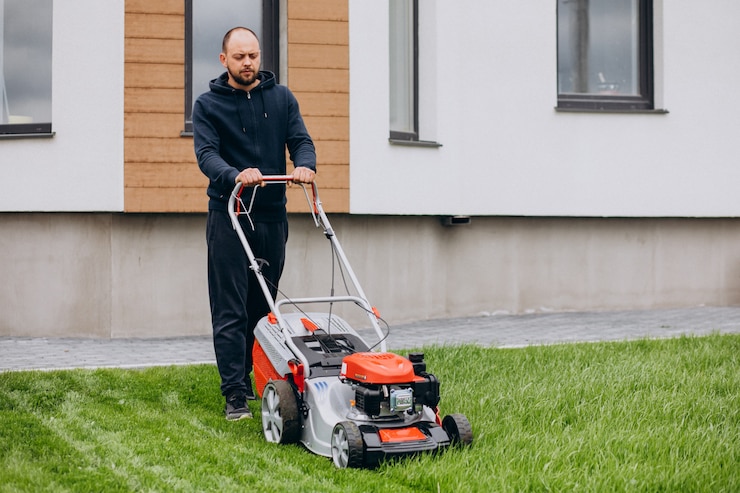
Lawn aeration: is the process of creating holes in the soil of a lawn in order to improve the health and growth of the grass. This is important because compacted soil can prevent air, water, and nutrients from reaching the roots of the grass, which can lead to poor growth and a decline in the overall health of the lawn.
There are several methods of lawn aeration, each of which has its own advantages and disadvantages. The most common methods are core aeration, spike aeration, and aeration with a plug aerator.
Core aeration: is the most effective method of aeration, as it removes small plugs of soil from the lawn using a specialized tool called a core aerator. This creates holes in the soil that allow air, water, and nutrients to reach the roots of the grass, promoting healthy growth and improving the overall health of the lawn.
Spike aeration: is a less effective method of aeration, as it simply involves poking holes in the soil using a tool called a spike aerator. This method is faster and easier to perform than core aeration, but it does not remove any soil from the lawn and therefore does not provide the same benefits.
Plug aeration is similar to core aeration, but instead of removing the plugs of soil, they are left on the surface of the lawn. This method is slightly less effective than core aeration, but it is still a good option for those who want to improve the health of their lawn.
Aeration is typically performed in the fall or early spring, when the soil is moist and the grass is actively growing. This is because aerating in these conditions allows the grass to recover more quickly and promotes healthy growth.
Before aerating your lawn, it is important to mow the grass and remove any debris such as leaves or branches. This will make it easier to aerate the soil and will help to ensure that the aeration is performed evenly across the entire lawn.
When using a core aerator or a plug aerator, be sure to overlap each pass to ensure that all areas of the lawn are aerated. This will help to ensure that the entire lawn is aerated evenly and that no areas are left untouched.
It is also important to avoid aerating in the heat of the day, as this can stress the grass and make it more susceptible to disease. Instead, aerate in the morning or evening when the temperature is cooler and the grass is not under as much stress.
After aerating, it is recommended to fertilize the lawn to help the grass recover and promote healthy growth. This can be done by applying a balanced fertilizer according to the manufacturer’s instructions.
Some homeowners may choose to overseed their lawn after aerating to help fill in any thin or bare areas. This can be done by spreading grass seed over the aerated lawn and watering it regularly to help the seed germinate and grow.
Aerating a lawn can have many benefits, including improved root growth, better water and nutrient absorption, and increased resistance to pests and diseases. A well-aerated lawn will be healthier and more resilient, and it will be better able to withstand the stresses of heavy use and extreme weather.
In addition to these benefits, aeration can also help to improve the appearance of a lawn by promoting thick, lush growth. This can make the lawn more attractive and can increase the value of your property.
Aeration is a relatively simple and inexpensive process that can be performed by homeowners with the right tools and knowledge. However, for the best results (and to do your best to prevent damaging your lawn with a lawn disease) working with a professional company is definitely the best option For more information on aeration from a trusted professional aeration company follow the link.







More Stories
Deciphering Car Insurance in Malaysia
Vlogging Equipment: What You Need to Get Started
How To Find The Best Plumbing Business To Fix Your Leaking Tap